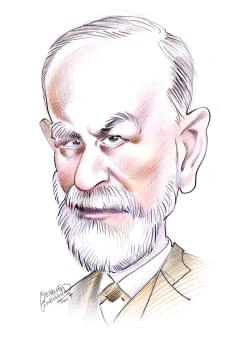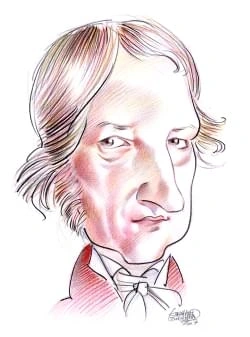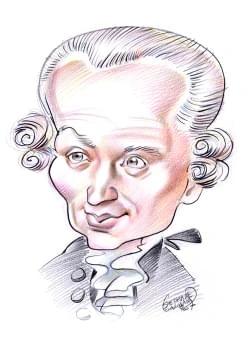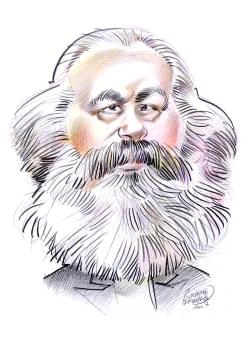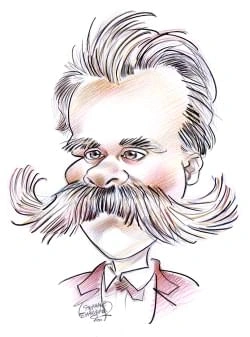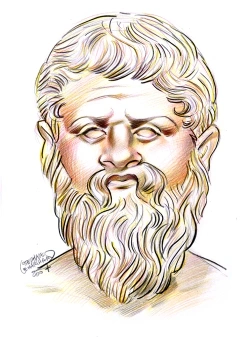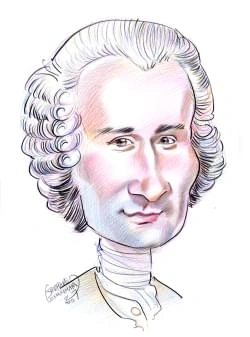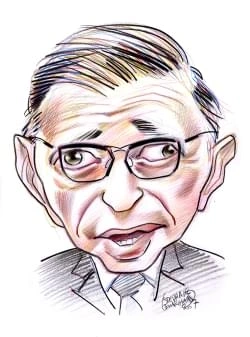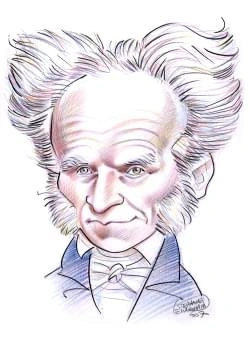910 résultats pour "théra"
-
Communism .
In Britain, Robert Owen, a philanthropic Welsh manufacturer, strove against the social problems brought about by the Industrial Revolution and sought to improve thewelfare of workers. As manager of a cotton mill, he enhanced the environment of his workers by improving their housing, modernizing mill equipment for greater safetyand sanitation, and establishing low-priced stores for the workers and schools for their children. Owen believed that workers, rather than governments, should createthe in...
-
Acid Rain.
the Adirondack Mountains of New York State, a quarter of the lakes and ponds are acidic, and many have lost their brook trout and other fish. In the middleAppalachian Mountains, over 1,300 streams are afflicted. All of Norway’s major rivers have been damaged by acid rain, severely reducing salmon and trout populations. E Plants and Animals The effects of acid rain on wildlife can be far-reaching. If a population of one plant or animal is adversely affected by acid rain, animals that feed on tha...
-
Wilfrid Laurier.
The Manitoba schools were the main issue in the 1896 election. Although the Catholic clergy campaigned against him, Laurier argued in Québec that he would obtainbetter terms for the Catholics by negotiating directly with the provincial government of Manitoba. “Hands off Manitoba” was an effective slogan in the other provinces aswell. A second issue was corruption in the Conservative Party, as a series of scandals had rocked the Bowell administration. Israel Tarte, a former Québec conservativewho...
-
Wilfrid Laurier - Canadian History.
The Manitoba schools were the main issue in the 1896 election. Although the Catholic clergy campaigned against him, Laurier argued in Québec that he would obtainbetter terms for the Catholics by negotiating directly with the provincial government of Manitoba. “Hands off Manitoba” was an effective slogan in the other provinces aswell. A second issue was corruption in the Conservative Party, as a series of scandals had rocked the Bowell administration. Israel Tarte, a former Québec conservativewho...
-
Africa - history.
Africa’s other major mountainous regions occur at the northern and southern fringes of the continent. The Atlas Mountains, a system of high ranges, extend for 2,200 km(1,400 mi) across Morocco, Algeria, and Tunisia, roughly parallel to the northern coast. These ranges enclose a number of broad inland basins and plateaus. In the west, theHigh (or Grand) Atlas contains Toubkal (4,165 m/ 13,665 ft), the highest peak of the system. Toward the east, the Atlas consists of two parallel ranges: the Tell...
-
Africa.
The highest elevations in Africa are found in the various ranges of East Africa. After Kilimanjaro, the next highest peaks are Mount Kenya (5,199 m/17,057 ft), north ofKilimanjaro in central Kenya; Margherita Peak (5,109 m/ 16,762 ft) in the Ruwenzori Range on the border between Uganda and the Democratic Republic of the Congo(DRC); Ras Dashen (4,620 m/ 15,157 ft) in the Ethiopian Highlands of northern Ethiopia; Mount Meru (4,565 m/ 14,977 ft), close to Kilimanjaro in Tanzania; and MountElgon (4,...
-
Mythology
I
INTRODUCTION
Mythology, the body of myths of a particular culture, and the study and interpretation of such myths.
usually define a myth as a story that has compelling drama and deals with basic elements and assumptions of a culture. Myths explain, for example, how the worldbegan; how humans and animals came into being; how certain customs, gestures, or forms of human activity originated; and how the divine and human worlds interact.Many myths take place at a time before the world as human beings know it came into being. Because myth-making often involves gods, other supernatural beings, andprocesses beyond...
-
Indian Literature
I
INTRODUCTION
Arundhati Roy's The God of Small Things
Indian author Arundhati Roy poses with a copy of her acclaimed first novel, The God of Small Things (1997).
Mathura BuddhaMany of the earliest texts of Indian literature were religious writings of Buddhism. This Buddha figure carved out ofsandstone is from Mathura, a city in northern India that was at the center of Buddhist sculptural activity from the 2ndcentury bc to the 6th century ad.Angelo Hornak/Corbis The sacred Vedas were composed in Old Sanskrit by Aryan poet-seers between about 1500 BC and about 1000 BC. The Vedas are compilations of two major literary forms: hymns of praise to nature deit...
-
-
Baroque Art and ArchitectureIINTRODUCTIONGerman Baroque ArchitectureThe baroque style of architecture flourished in Germany in the 18th century.
C Early baroque styles Conversion of Saint PaulItalian baroque painter Caravaggio painted scenes of realism and drama, often selecting lofty, religious themes anddepicting them with lower-class characters and settings with dramatic spotlighting. With its unidealized characters andfocus on the horse’s body, his Conversion of Saint Paul seems to record a stable accident, not a miraculous conversion byGod. This work was painted in 1601 and is in the Cerasi Chapel, Santa Maria del Popolo, Rome, It...
-
Constitution of the United States.
chief executive should have the power to veto legislation, should be elected by Congress or the people, should be eligible to run for reelection, and should command thearmed forces. Some delegates even hoped for a limited monarchy. Not until September 8, more than three months after the convention started, did the final shape ofthe presidency emerge: a single leader, elected to a four-year term and eligible for reelection, with authority to veto bills enacted by Congress. The president was alsog...
-
Constitution of the United States - U.
chief executive should have the power to veto legislation, should be elected by Congress or the people, should be eligible to run for reelection, and should command thearmed forces. Some delegates even hoped for a limited monarchy. Not until September 8, more than three months after the convention started, did the final shape ofthe presidency emerge: a single leader, elected to a four-year term and eligible for reelection, with authority to veto bills enacted by Congress. The president was alsog...
-
Benito Mussolini.
Mussolini threatened to order his tens of thousands of armed Black Shirts to occupy Rome if he were not asked to form the new government. Bands of Fascists beganmoving towards the capital in what would become known as the March on Rome. King Victor Emmanuel III at first leaned towards declaring a state of emergency andsending the army against the Fascists, but powerful interest groups, state officials, and army leaders convinced him that Mussolini should be given the chance to endwhat they consi...
-
Benito Mussolini .
Mussolini threatened to order his tens of thousands of armed Black Shirts to occupy Rome if he were not asked to form the new government. Bands of Fascists beganmoving towards the capital in what would become known as the March on Rome. King Victor Emmanuel III at first leaned towards declaring a state of emergency andsending the army against the Fascists, but powerful interest groups, state officials, and army leaders convinced him that Mussolini should be given the chance to endwhat they consi...
-
Book Publishing
I
INTRODUCTION
Book Publishing, manufacture, publication, and distribution of books.
they use advanced printers and binding techniques to run off as many books as required. Printing only as many books as needed allows companies to save money, andbeing able to store books digitally means that books can be printed whenever necessary, keeping them in print indefinitely. B Marketing and Distribution Once the book has been made, it is ready for distribution. Traditionally, trade books have been sold primarily by salespeople calling on bookstores across the countryand taking orders f...
- HERNANI DE VICTOR HUGO (TEXTE)
-
Weather.
hours, and the snow can be much deeper in places where the wind piles it up in drifts. Extraordinarily deep snows sometimes accumulate on the upwind side ofmountain slopes during severe winter storms or on the downwind shores of large lakes during outbreaks of polar air. VI WIND Wind is the horizontal movement of air. It is named for the direction from which it comes—for example, a north wind comes from the north. In most places near theground, the wind speed averages from 8 to 24 km/h (from 5...
-
-
Brian Mulroney.
At the party convention Mulroney was one of the candidates who ran against Clark. This time Mulroney did not have to contend with a rival candidate from Québec. Healso had the support of the remnants of the Diefenbaker faction—who disliked Clark even more than they disliked Mulroney. Mulroney was also endorsed by asubstantial group of members of Parliament; this endorsement helped allay concerns about whether he could provide effective leadership in Parliament. Mulroney waselected leader of the...
-
Brian Mulroney - Canadian History.
At the party convention Mulroney was one of the candidates who ran against Clark. This time Mulroney did not have to contend with a rival candidate from Québec. Healso had the support of the remnants of the Diefenbaker faction—who disliked Clark even more than they disliked Mulroney. Mulroney was also endorsed by asubstantial group of members of Parliament; this endorsement helped allay concerns about whether he could provide effective leadership in Parliament. Mulroney waselected leader of the...
-
Persian Gulf War.
to “use all necessary means” to force Iraq from Kuwait if Iraq remained in the country after January 15, 1991. The Iraqis rejected the ultimatum. Soon after the vote,the United States agreed to a direct meeting between Secretary of State James Baker and Iraq’s foreign minister. The two sides met on January 9. Neither offered tocompromise. The United States underscored the ultimatum, and the Iraqis refused to comply with it, even threatening to attack Israel. For the United States, themeeting was...
-
Persian Gulf War - History.
to “use all necessary means” to force Iraq from Kuwait if Iraq remained in the country after January 15, 1991. The Iraqis rejected the ultimatum. Soon after the vote,the United States agreed to a direct meeting between Secretary of State James Baker and Iraq’s foreign minister. The two sides met on January 9. Neither offered tocompromise. The United States underscored the ultimatum, and the Iraqis refused to comply with it, even threatening to attack Israel. For the United States, themeeting was...
-
Persian Gulf War - U.
to “use all necessary means” to force Iraq from Kuwait if Iraq remained in the country after January 15, 1991. The Iraqis rejected the ultimatum. Soon after the vote,the United States agreed to a direct meeting between Secretary of State James Baker and Iraq’s foreign minister. The two sides met on January 9. Neither offered tocompromise. The United States underscored the ultimatum, and the Iraqis refused to comply with it, even threatening to attack Israel. For the United States, themeeting was...
-
Slavery in Africa.
The spread of Islam from Arabia into Africa after the religion’s founding in the 7th century AD affected the practice of slavery and slave trading in West, Central, and East Africa. Arabs had practiced slave raiding and trading in Arabia for centuries prior to the founding of Islam, and slavery became a component of Islamic traditions.Both the Qur'an (Koran) (the sacred scripture of Islam) and Islamic religious law served to codify and justify the existence of slavery. As Muslim Arabs conquered...
-
Beetle - biology.
cut, or crush prey. Beetles that consume nectar from flowers use tubelike mouthparts to suck up nectar like a primitive straw. C Thorax The thorax, the body region behind the head, consists of three segments that provide attachments for the legs and wings. Each segment of the thorax carries a pair oflegs. The middle segment also bears the stiff wing sheaths called elytra, and the hind segment holds the membranous hind wings. D Legs Beetles have six jointed legs, each leg with five parts. The f...
-
Plant - biology.
B1 Vacuoles Vacuoles are membrane-bound cavities filled with cell sap, which is made up mostly of water containing various dissolved sugars, salts, and other chemicals. B2 Plastids Plastids are types of organelles, structures that carry out specialized functions in the cell. Three kinds of plastids are important here. Chloroplasts contain chlorophyllsand carotenoid pigments; they are the site of photosynthesis, the process in which light energy from the sun is fixed as chemical energy in the b...
-
-
Indo-Pakistani Wars - History.
wrest Jammu and Kashmīr from India through the use of force. This effort failed as India held its ground, and the war ended in a stalemate after almost two months ofarmed conflict. Although the second war over the territory was shorter than the first, the increased firepower of the two nations resulted in a more deadly war, with atotal of about 6,800 battle casualties. A Events Before the War A number of factors precipitated the second conflict over Jammu and Kashm īr. In the wake of a border w...
-
Pyramids (Egypt) - geography.
limestone debris left over from the construction work. When the workers had completed the pyramid and installed the pyramidion, or cap stone, ramps still covered the surface of the pyramid. As the workers dismantled the ramps from the top down, they slowly exposed the pyramid’s stone surface, which stonemasons smoothed and polished. When the ramp was gone, the pyramid wasdisplayed in its full majesty. B Interior The interior of the Great Pyramid is complex, with a series of passages leading t...
-
Pyramids (Egypt) - History.
limestone debris left over from the construction work. When the workers had completed the pyramid and installed the pyramidion, or cap stone, ramps still covered the surface of the pyramid. As the workers dismantled the ramps from the top down, they slowly exposed the pyramid’s stone surface, which stonemasons smoothed and polished. When the ramp was gone, the pyramid wasdisplayed in its full majesty. B Interior The interior of the Great Pyramid is complex, with a series of passages leading t...
-
Roman Mythology.
Her temple on the Aventine Hill in Rome was a center for organizations of skilled craftspeople. According to tradition, in 509 BC the dynasty of Etruscan kings ended and the Roman Republic was founded. The republic was ruled by two chief magistrates, called consuls, who were elected by the people to one-year terms. During the time of the republic, the Capitoline temple became the most important public shrine of theRoman people and the focus of public worship. Each January, the new consuls offer...
-
Alphabet
I
INTRODUCTION
Bengali Script
India developed a number of different writing systems over the course of its history.
A Pictographic and Ideographic Systems Early systems of writing used pictures to represent things and then to represent the sounds of those things. Pictographic writing, in which a simplified picture of the sunstood for the word sun, was probably the first step toward a written language. Chinese began as a pictographic language. To represent abstract ideas, the Chinese writing system combined pictographs. For example, the pictographs for sun and tree were combined to represent the concept of...
-
Volcano.
before eruption. Very violent explosive eruptions are called Plinian eruptions, after Roman naturalist Pliny the Elder. These eruptions can last for several hours to daysand eject a large amount of pyroclastic material. Some volcanoes can produce much more energetic eruptions that eject materials farther from the vents because oftheir andesitic and dacitic composition. Andesitic and dacitic lava is generally thicker than basaltic lava. Stiff lava generally produces more-explosive eruptions. B No...
-
Elephant - biology.
B Trunk An elephant's nose and upper lip are combined in a long, limber trunk, an exceptionally supple appendage with an estimated 150,000 muscles. The versatile trunk actslike a hand for grasping low-growing shrubs and other food and placing it into the mouth; an arm for breaking off tree branches; or a snorkel for breathing when theelephant's body is submerged. Elephants also use their trunks to suck up water and squirt it into their mouths for drinking or over their bodies for bathing. Nostr...
-
Literary Criticism
I
INTRODUCTION
Literary Criticism, discussion of literature, including description, analysis, interpretation, and evaluation of literary works.
IV THE 17TH AND 18TH CENTURIES The climate of criticism changed with the arrival on the literary scene of such giants as Miguel de Cervantes, Lope de Vega, and Pedro Calderòn in Spain; WilliamShakespeare, Ben Jonson, and John Milton in England; and Pierre Corneille, Jean Baptiste Racine, and Molière in France. Most of these writers specialized or excelled indrama, and consequently the so-called battle of the ancients and moderns—the critical comparison of Greek and Roman authors with more rece...
-
-
Cyprus - country.
40,000 cubic meters (1.4 million cubic feet) of salt water into fresh water per day, opened at Dhekelia in 1997, and a second larger plant opened at Larnaca in 2001. III PEOPLE OF CYPRUS The combined population of the Greek and Turkish sectors (2008 estimate) is 792,604. The overall population density is 86 persons per sq km (222 per sq mi). About69 percent of the island’s inhabitants live in urban areas. Greek-speaking Cypriots make up approximately 85 percent of the population. About 12 perc...
-
Australia - country.
itself forms most of the border between New South Wales and Victoria. Considerable lengths of the Murray, Darling, and Murrumbidgee rivers are navigable during thewet seasons. The central plains region, also known as the Channel Country, is interlaced by a network of rivers. During the rainy season these rivers flood the low-lying countryside,but in dry months they become merely a series of water holes. The Victoria, Daly, and Roper rivers drain a section of the Northern Territory. In Queensland...
-
Australia - Geography.
itself forms most of the border between New South Wales and Victoria. Considerable lengths of the Murray, Darling, and Murrumbidgee rivers are navigable during thewet seasons. The central plains region, also known as the Channel Country, is interlaced by a network of rivers. During the rainy season these rivers flood the low-lying countryside,but in dry months they become merely a series of water holes. The Victoria, Daly, and Roper rivers drain a section of the Northern Territory. In Queensland...
-
Shark - biology.
Sharks have two-chambered hearts that are relatively small compared to the rest of their bodies. Blood flows from the heart to the gills, where it collects oxygen fromwater and then distributes it to the other organs and tissues. The small heart produces weak blood pressure, and many sharks must swim continuously to create themuscular contractions needed to circulate blood throughout their bodies. Most sharks are cold-blooded—that is, they do not generate heat by digesting food. Instead, the bod...
-
St. Louis (city) - geography.
I
INTRODUCTION
St. Louis (city) or Saint Louis,
Between 1940 and 1990 the black population in metropolitan St. Louis nearly tripled. Blacks are most heavily concentrated in three areas in the St. Louis metropolitanregion: East Saint Louis, the North Side close to downtown, and an east-west belt extending from the waterfront to beyond Forest Park. In the 19th and early 20th centuries, areas to the north and south of the central business district were settled by immigrant working families from Germany, Ireland,and many Eastern European countrie...
-
United States History - U.
and improved upon the designs of Arab sailing ships and learned to mount cannons on those ships. In the 15th century they began exploring the west coast ofAfrica—bypassing Arab merchants to trade directly for African gold and slaves. They also colonized the Madeira Islands, the Azores, and the Cape Verde Islands andturned them into the first European slave plantations. The European explorers were all looking for an ocean route to Asia. Christopher Columbus sailed for the monarchs of Spain in 149...
-
United States History - U.
and improved upon the designs of Arab sailing ships and learned to mount cannons on those ships. In the 15th century they began exploring the west coast ofAfrica—bypassing Arab merchants to trade directly for African gold and slaves. They also colonized the Madeira Islands, the Azores, and the Cape Verde Islands andturned them into the first European slave plantations. The European explorers were all looking for an ocean route to Asia. Christopher Columbus sailed for the monarchs of Spain in 149...
-
Azerbaijan - country.
second most important industrial center after Baku. A Ethnic Groups Azerbaijan, including the autonomous exclave of Naxçivan, is populated mostly by ethnic Azerbaijanis, who are also known as Azeris. The ethnic composition of thecountry changed due to a civil war between the government of Azerbaijan and Armenian secessionists in the Nagorno-Karabakh enclave. Beginning in 1988, when thepeople of Nagorno-Karabakh unilaterally decided to secede from Azerbaijan, nearly the entire Azerbaijani popula...
-
-
World War I .
and troops to Europe from the United States and other overseas sources. In 1914 Britain implemented a sea blockade of Germany to prevent the delivery of importssuch as food and war materials. The same year, Germany began using submarines to disrupt Allied seaborne traffic and prevent supplies from reaching Britain. In 1915Germany instituted a submarine blockade around Britain. From February 1915 to September 1915 and again in 1917, Germany used unrestricted submarine warfare,sinking ships withou...
-
Montana - geography.
(191 sq mi), is Montana’s largest lake, and the largest natural freshwater lake in the contiguous states west of the Mississippi River. C Climate Climatic regions in Montana coincide roughly with the two major physiographic regions. In western Montana, as compared with the eastern plains area, winters tend tobe milder while summers are cooler. Precipitation is more evenly distributed throughout the year in the west, and it is cloudier and somewhat more humid in all seasons.In addition, the grow...
-
Montana - USA History.
(191 sq mi), is Montana’s largest lake, and the largest natural freshwater lake in the contiguous states west of the Mississippi River. C Climate Climatic regions in Montana coincide roughly with the two major physiographic regions. In western Montana, as compared with the eastern plains area, winters tend tobe milder while summers are cooler. Precipitation is more evenly distributed throughout the year in the west, and it is cloudier and somewhat more humid in all seasons.In addition, the grow...
-
Automobile.
Electric motors have been used to power automobiles since the late 1800s. Electric power supplied by batteries runs the motor, which rotates a driveshaft, the shaftthat transmits engine power to the axles. Commercial electric car models for specialized purposes were available in the 1980s. General Motors Corporation introduced amass-production all-electric car in the mid-1990s. Automobiles that combine two or more types of engines are called hybrids. A typical hybrid is an electric motor with ba...
-
Holy Roman Empire
I
INTRODUCTION
Holy Roman Empire, political entity of lands in western and central Europe, founded by Charlemagne in
AD
800 and dissolved by Emperor Francis II in 1806.
acquired the imperial title and an area running from the North Sea through Lotharingia (Lorraine) and Burgundy to northern Italy; Louis II received East Francia (theGerman duchies of Saxony, Swabia, and Bavaria). In 870 Lothair’s middle kingdom was divided by the Treaty of Mersen, which gave Lotharingia to East Francia and therest to West Francia. This division created the foundation for today’s states of Germany and France, respectively; however, in the 9th century these were highly fractured d...
-
Holy Roman Empire .
acquired the imperial title and an area running from the North Sea through Lotharingia (Lorraine) and Burgundy to northern Italy; Louis II received East Francia (theGerman duchies of Saxony, Swabia, and Bavaria). In 870 Lothair’s middle kingdom was divided by the Treaty of Mersen, which gave Lotharingia to East Francia and therest to West Francia. This division created the foundation for today’s states of Germany and France, respectively; however, in the 9th century these were highly fractured d...
-
Denmark - country.
forests, which cover just 11.6 percent of the country, include conifers (mainly fir, spruce, larch, and pine), beech, oak, birch, and ash. Several varieties of ferns andmosses common to the northern European mainland are also found. Wild animals are scarce. Natural animal life is limited to deer and small animals such as foxes,squirrels, hares, wild ducks, pheasants, and partridges. Numerous species of freshwater fish live in Denmark’s streams and lakes. F Environmental Issues Considered highly...
-
Ant - biology.
The workers of many ant species carry a stinger within the hind end of the gaster. These ants use the stinger to defend against their enemies. In some species, workerants lack a stinger but use the tip of their gaster to squirt or dab poison at other small animals and when fighting battles with other ants, fending off predators, or killinginsects or other animals that they use as food. III PHYSIOLOGY Ants have a rigid, external skeleton called an exoskeleton that gives the soft, inner body its...
-
-
Television.
A charge-coupled device (CCD) can be much smaller than a camera tube and is much more durable. As a result, cameras with CCDs are more compact and portablethan those using a camera tube. The image they create is less vulnerable to distortion and is therefore clearer. In a CCD, the light from a scene strikes an array ofphotodiodes arranged on a silicon chip. Photodiodes are devices that conduct electricity when they are struck by light; they send this electricity to tiny capacitors. Thecapacitors...
-
Republic of Indonesia - country.
Mahakam in East Kalimantan and the Martapura and Barito in South Kalimantan. Most of these rivers originate in the island’s central massif (mountain mass) and meander through extensive swamps as they approach the coast. Settlements such as Samarinda and Banjarmasin cluster along the rivers, which serve ascommunication routes into the interior. The largest rivers on Sumatra drain from west to east into the Strait of Malacca. In the north, the Asahan River once linked trade between the Batak peo...
}})
